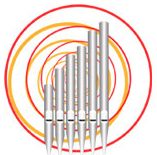Organ no. 9 | Organ of the Church Ecce Homo- Convent of the Sisters of Zion
This organ which belongs to the Order of the Sisters of Zion was constructed in 1893 by the organ-maker Mader of Marseille, France. It was slightly modified by Rieger in 1935. New modifications must have taken place since, probably done by the organbuiding workshop of the Franciscan monastery of the Holy Saviour: on the first keyboard, Violoncello 8′ was replaced with a Quint 2 2/3′ and on the second keyboard the Voix Humaine 8′ and Voix Celeste 8′ by a Flute à cheminée 4′ and Quarte de Nasard 2′.
As one will see, these modifications resulted in the complete change in the personality of the instrument. This romantic French organ par excellence found itself deprived of its most characteristic stops. However, it has kept most of its beautiful sound characteristics . The acoustics in the church is excellent, with a reverberation of 1 second.
The organ is placed on the gallery that it occupies almost entirely. The oak console is turned toward the choir. The organ case is also of dark varnished oak. The stop of Montre 8′ is organized in groups of 5-9-5-9-5 pipes each placed in the salient towers supported by the decorative conches and dominated by the domes. A freeze runs along the upper part of the organ case which in its center forms two arches in which the groups of 9 pipes are placed.
The organ was restored once again in 1998 by Dubay Organ Ltd. (Canada).


